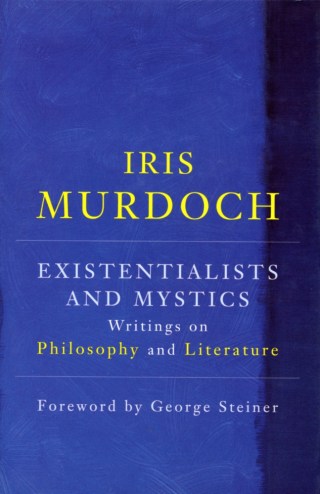“Love is the extremely difficult realisation that something other than oneself is real.”
Decades into his long life, the poet Robert Graves defined love as “a recognition of another person’s integrity and truth in a way that… makes both of you light up when you recognize the quality in the other.” A generation later, the poetic playwright Tom Stoppard defined it as “knowledge of each other… knowledge of self, the real him, the real her, in extremis, the mask slipped from the face.” This fact is the counterpoint to the most dangerous fiction we inherited from the Romantics — their model of love as union between lover and beloved, a kind of fusion of selves, a mutual completion rather than mutual recognition of and rejoicing in two parallel completenesses.
Such gladsome recognition of the other’s otherness is the basis of love and the basis of morality, both requiring not a bridging of selves but an unselfing, both vulnerable to same fundamental misconception that fissures the very foundation upon which both rest.
Almost every religious, spiritual, and contemplative tradition in the history of our species, when stripped of its mystical and counterscientific aspects, holds at its center an ethic of love. But almost every tradition, especially of the West, also holds at its center a dangerous warping of love in the hands of the self. Most commonly known as the Golden Rule, it mistakes the reality of the self for the only reality, taking one’s own wishes, desires, and longings as universal, presuming that the other shares those precisely — negating the sovereign reality of the other, negating the possibility that a very different person might want something very different done unto them.
The remedy for this malady of selfing is to remember that there are infinitely many kinds of beautiful lives, each with its singular longings for and visions of beauty, goodness, and gladness. Nothing reminds us of this more readily than art, with its invitation to step into the intimate reality of other lives — the word “empathy,” after all, originated in the imaginative act of projecting oneself into a work of art — and no one has irradiated that reminder more luminously than the uncommon philosopher-novelist Iris Murdoch (July 15, 1919–February 8, 1999).
Dame Iris Murdoch by Ida Kar (National Portrait Gallery)
Long before her 1970 classic The Sovereignty of the Good, in which she coined the lovely concept of art as “an occasion for unselfing,” Murdoch began developing these ideas an essay titled “The Sublime and the Good,” originally published in the Chicago Review in the autumn of 1959 and later included in the altogether superb posthumous collection Existentialists and Mystics: Writings on Philosophy and Literature (public library). She writes:
Art and morals are… one. Their essence is the same. The essence of both of them is love. Love is the perception of individuals. Love is the extremely difficult realisation that something other than oneself is real. Love, and so art and morals, is the discovery of reality.
In the same era when, across the Atlantic, Alan Watts was writing that “Life and Reality are not things you can have for yourself unless you accord them to all others” as he was introducing Eastern teaching in the West, Murdoch builds on the parallels between art and morality through considering the multiple dimensions of love — the personal and the political, the individual and the communal:
The enemies of art and of morals, the enemies that is of love, are the same: social convention and neurosis. One may fail to see the individual… because we are ourselves sunk in a social whole which we allow uncritically to determine our reactions, or because we see each other exclusively as so determined. Or we may fail to see the individual because we are completely enclosed in a fantasy world of our own into which we try to draw things from outside, not grasping their reality and independence, making them into dream objects of our own. Fantasy, the enemy of art, is the enemy of true imagination: Love, an exercise of the imagination… The exercise of overcoming one’s self, of the expulsion of fantasy and convention… is indeed exhilarating. It is also, if we perform it properly which we hardly ever do, painful.
“Real isn’t how you are made… It’s a thing that happens to you.” Maurice Sendak’s little-known 1960 illustrations for The Velveteen Rabbit.
In a sentiment that calls to mind James Baldwin’s reflection on love and his haunting observation that “nothing is more unbearable, once one has it, than freedom,” Murdoch adds:
The tragic freedom implied by love is this: that we all have an indefinitely extended capacity to imagine the being of others. Tragic, because there is no prefabricated harmony, and others are, to an extent we never cease discovering, different from ourselves… Freedom is exercised in the confrontation by each other, in the context of an infinitely extensible work of imaginative understanding, of two irreducibly dissimilar individuals. Love is the imaginative recognition of, that is respect for, this otherness.
Complement this fragment of Existentialists and Mystics — which also gave us Murdoch on art as a force of resistance and the key to great storytelling — with her almost unbearably beautiful love letters, then revisit Tolstoy on love and morality.
donating = loving
For a decade and half, I have been spending hundreds of hours and thousands of dollars each month composing The Marginalian (which bore the unbearable name Brain Pickings for its first fifteen years). It has remained free and ad-free and alive thanks to patronage from readers. I have no staff, no interns, no assistant — a thoroughly one-woman labor of love that is also my life and my livelihood. If this labor makes your own life more livable in any way, please consider lending a helping hand with a donation. Your support makes all the difference.
newsletter
The Marginalian has a free weekly newsletter. It comes out on Sundays and offers the week’s most inspiring reading. Here’s what to expect. Like? Sign up.





